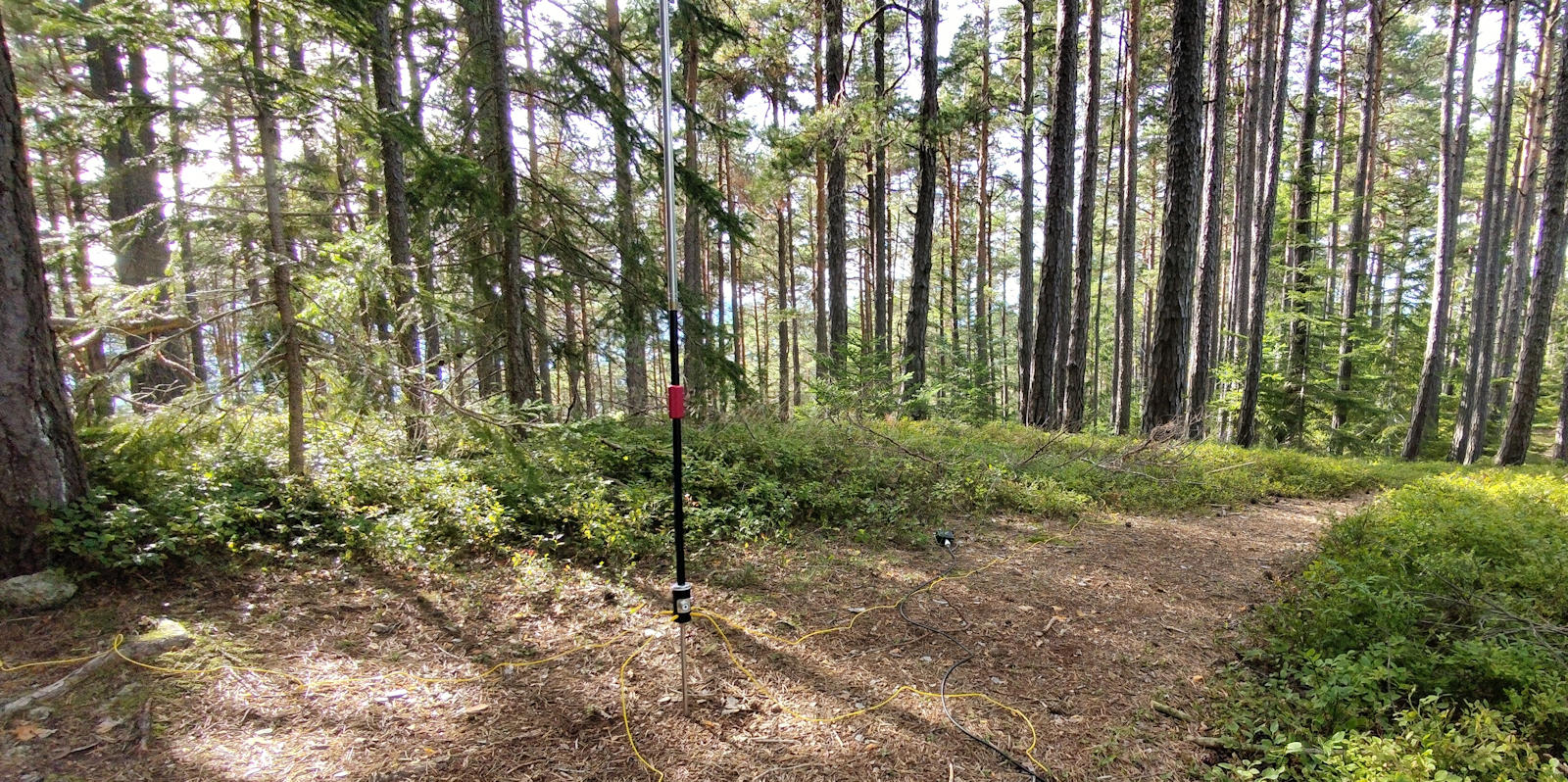Langdraht gegen Vertikal
Bei mobilem Einsatz bieten sich aus Gewichts und Transportgründen Langdraht
Antennen an. Diese haben tendentiell das Problem, daß man sie nicht
ausreichend hoch aufbauen kann. Realistische Höhen sind 5-10m. In Wäldern
gibts aber durch die Bäume eine Höhenbegrenzung. Umgekehrt lassen sich die
Bäume zum Abstammen der Drahtantennen nutzen.
Eine Vertical als Groundplane ist dankbar, weil das Prinzip keine Aufbauhöhen
fordert nur der Strahler mit 3-7m ist zu berücksichtigen. Der Untergrund kann
für beide Antennenbauformen eine Herausforderung werden. Man muß irgendwie
den 2. Teil des Dipols aufbauen. Auf steinigem Boden kann das durchaus
schlechte Qualität haben also dadurch eher höhere SWR Werte haben wenn man
trokenen Boden hat.
Während einer SOTA Aktivierung am Eselberg habe ich an einer Stelle mitten
im Wald eine 6,9m Langdraht mit einer MC 750 Vertical verglichen.
Wire Antenna compared to MC 750
For mobile use, long-wire antennas are recommended for weight and transport
reasons. These tend to have the problem that they cannot be installed high
enough. Realistic heights are 5-10m. In forests, however, the trees limit
the height. Conversely, the trees can be used to support the wire antennas.
A vertical as a ground plane is useful because the principle does not require
any installation heights; only the radiator, which is 3-7m, needs to be
considered. The ground can be a challenge for both antenna designs. You have
to somehow install the second part of the dipole. On stony ground, this can
be of poor quality, and therefore tends to have higher SWR values f the
ground is dry.
During a SOTA activation on Eselberg, I compared a 6.9m long wire with an
MC 750 Vertical at a spot in the middle of the forest.


